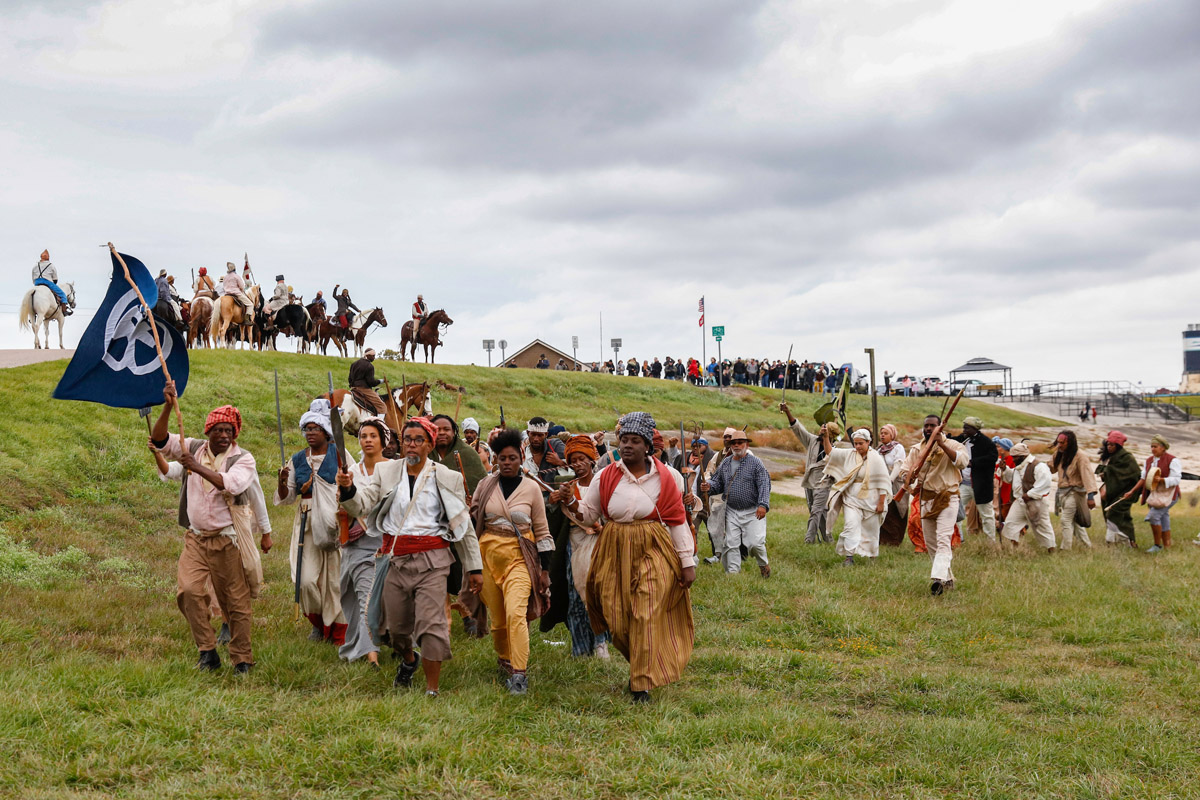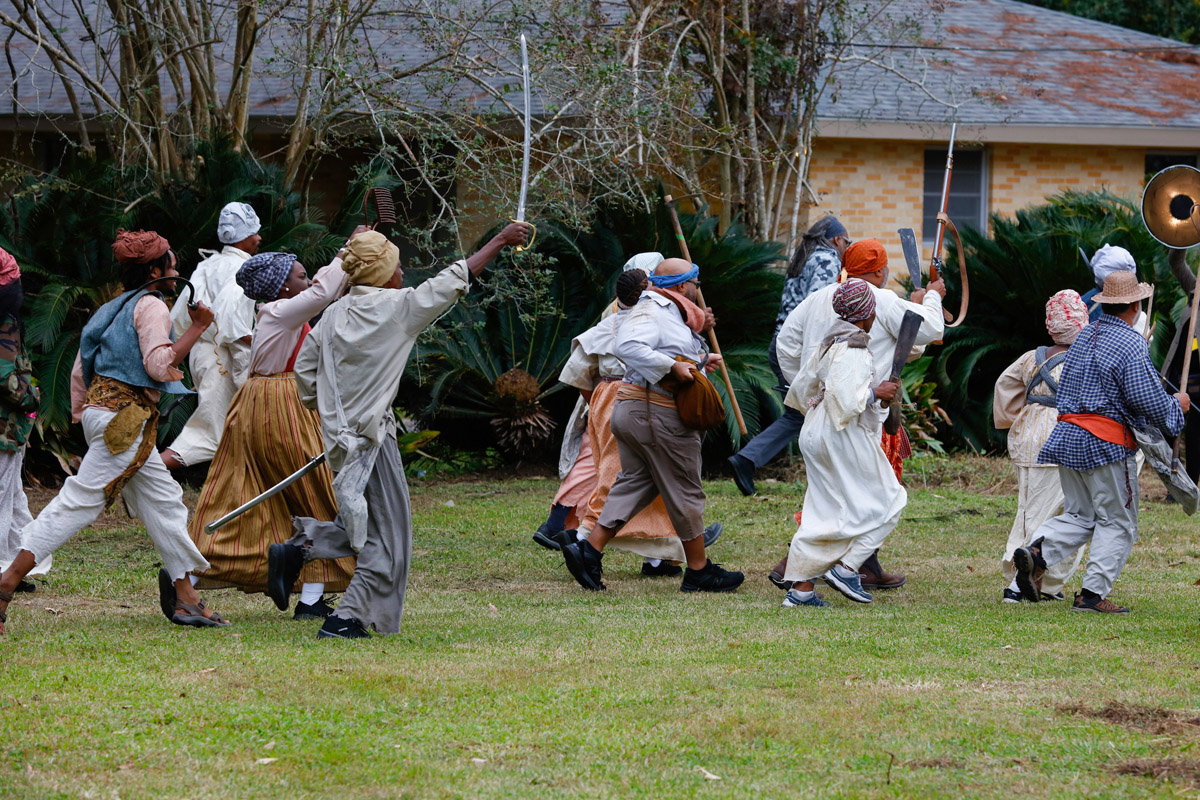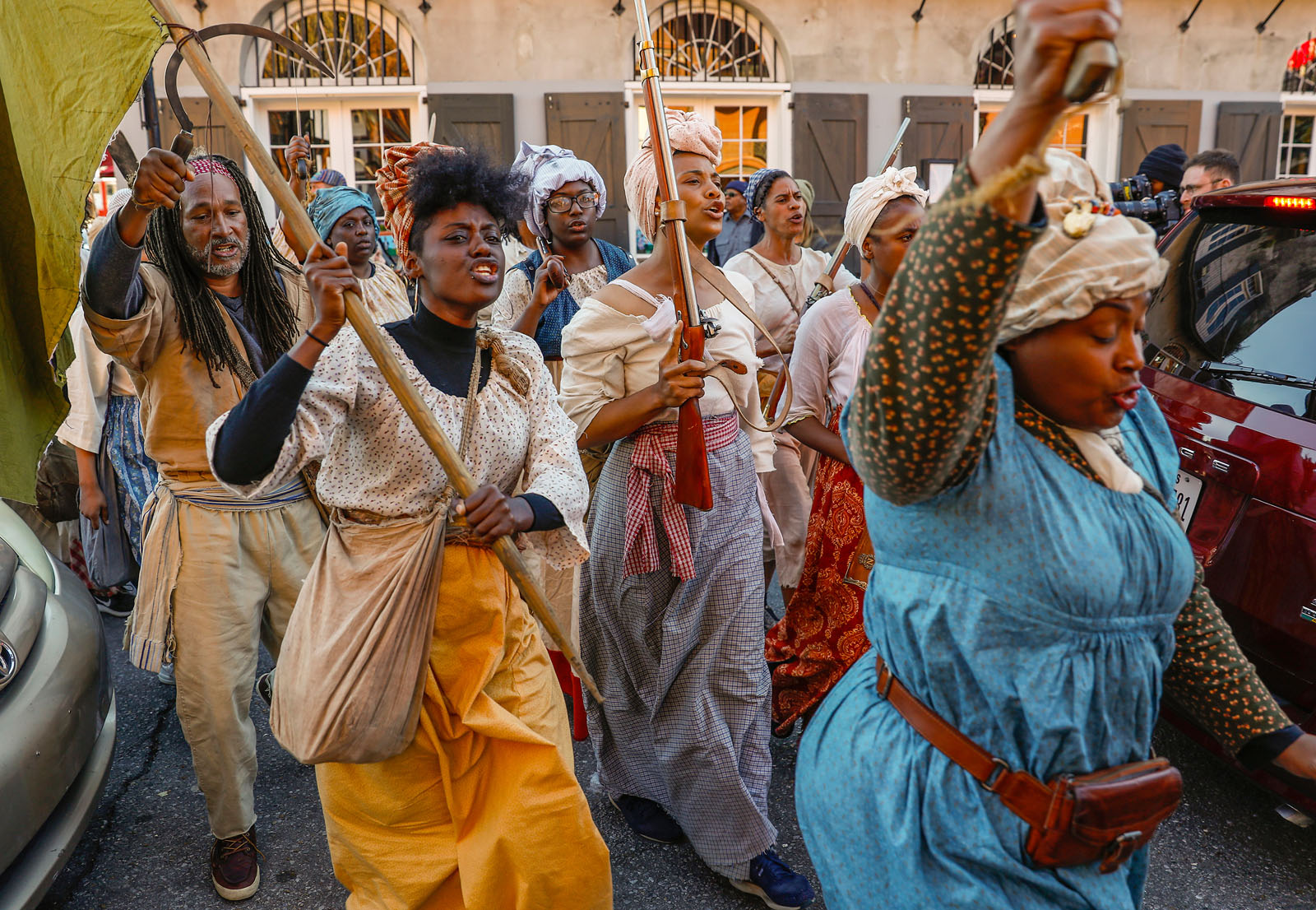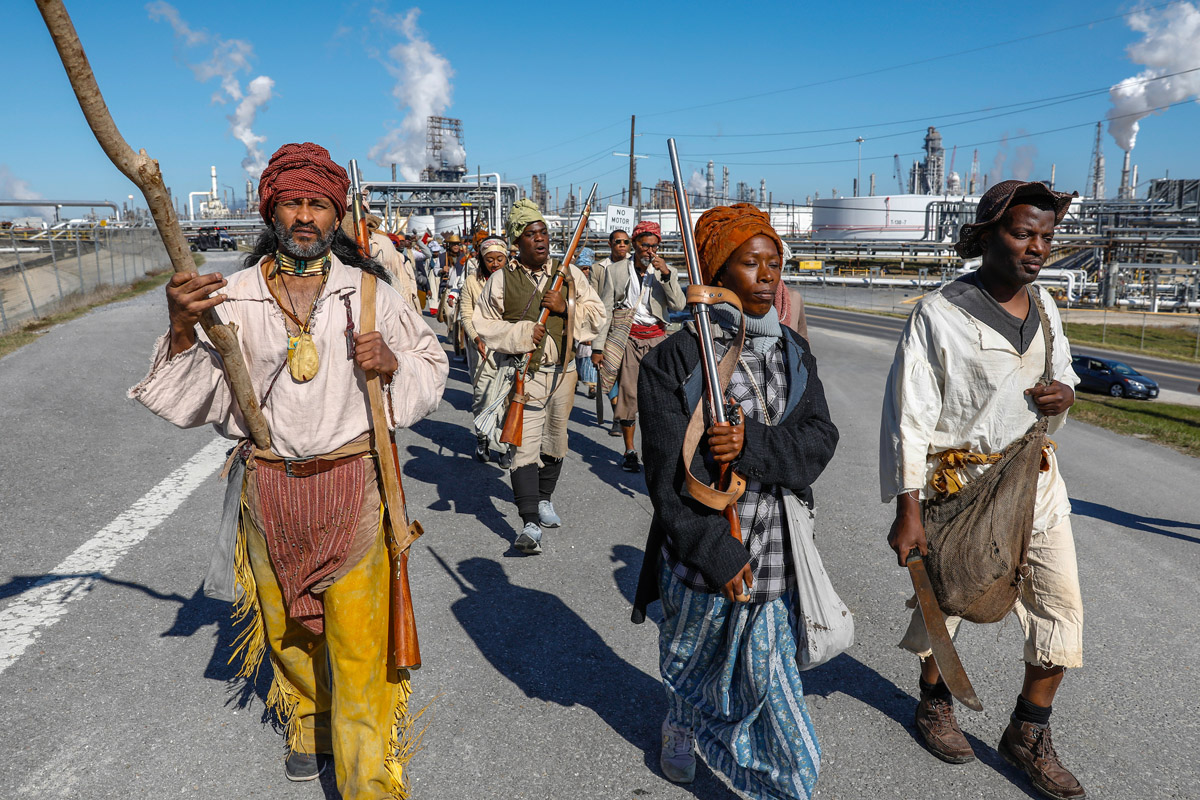Slave Rebellion Reenactment: History, Context, and Impact with Dread Scott
by Yoli Terziyska

From November 8 to 9, 2019, over five hundred reenactors marched on the streets of New Orleans to restage and reinterpret one of the largest, yet little-known, slave rebellions in American history. The performance, entitled Slave Rebellion Reenactment (SRR), was organized by the New York-based artist Dread Scott in an effort to celebrate togetherness, freedom, and emancipation.
The work, which cited an action that took place between January 8–10, 1811, highlighted the United States’ problematic, and ongoing, history of division. Known as the German Coast Uprising, the revolt started at the Manuel Andry sugar cane Plantation in St. John the Baptist Parish, near New Orleans.1 In the event, a group of slaves armed themselves and attacked the plantation’s owners, killing Andry’s son. The rebels later advanced towards New Orleans, recruiting others along the way. An estimated five-hundred participants carrying pikes, axes, firearms, and flags marched together for approximately 20 miles to demand the basic human right to freedom. The two-day uprising posed a fundamental threat to white control over New Orleans, resulting in its quick and brutal suppression by the local militia. The rebellion concluded with the slaughter and post-trial execution of most rebels.2 Although brief and buried in history, the event helped fracture the then-permeating myth of “the happy slave.” It was a myth that was sustained by slave owners who vehemently upheld the narrative that slaves cheerfully worked and sung on the fields from dawn to dusk.3 That romanticized, and apocryphal, image censored the inhumanity and indignity that defined America’s institution of slavery. The resulting trauma from these events is perpetuated in present day complications, addressed in Scott’s Slave Rebellion Reenactment’s sub-textual fabric.

Over two hundred years later, the artist’s organized uprising had volunteers march for 26 miles, with their journey culminating in New Orleans. Scott’s community-engaged performance retraced the steps some of the participants’ ancestors from 1811 took towards emancipation. The reenactors, dressed in nineteenth century period-appropriate garments, carried costume props such as pistols, pitchforks, and muskets. While SRR’s performers marched on, they sang in Creole and English to African drumming, and chanted “On to New Orleans! Freedom or death! We’re going to end slavery! Join us!”.4
SRR appeared out of place in the contemporary context of fast food joints, oil refineries, and strip malls as backdrop. Accounts from some of the performers state that partaking in Scott’s work was a powerful experience. For Cephus Johnson, the uncle of Oscar Grant—who was shot and murdered by the police in California in 2009—being part of the performance gave him a platform to “focus on freedom, justice, and equality.”5 Yet, the audience’s experience of, and reaction to, Scott’s ambitious reenactment was expectedly unpredictable. SRR’s organizers admitted that before the event, they had prepared for anything—the march could either have been perceived as an artwork and a celebration of freedom and togetherness, as Scott and the reenactors had intended, or as a crowd of armed Black people.6 The march did not result in local unrest. Some accounts of onlookers included audience members being brought to tears from the power of SRR. Another report addressed one angry resident’s concern for the traffic delays caused by the performance: “That’s history. Why don’t they let that be?” he said. “I think it’s a bunch of bullcrap myself. We let them have what they want. They get their way.”7

This divided reaction is a stark reflection of contemporary issues concerning Black history and current lived Black experience. Scott’s artwork succeeded in providing a platform for an empowering experience for its participants. However, for its audience members, the intervention could prove empowering mostly for those that already empathized, or sympathized, with the artist’s message. SRR showed that a viscerally powerful, interruptive, performance can polarize an audience that does not already identify with its message. The public’s reaction to Scott’s artwork mimics the attitude towards events in the United States today, highlighting the fundamental division between communities within the country.
Official accounts at the time of the German Coast Uprising maintained the distorted notion that the revolt was a group of outlaws whose intention was to pillage and plunder.8 The revolutionaries’ motive was shrouded by propagandistic measures and muted by history. In the present day, global phenomena related to the Black Lives Matter (BLM) movement echo the past that inspired Scott’s SRR. If Slave Rebellion Reenactment were to be performed today, rather than last November, it would likely yield hugely contrasting results due to its contextual placement. I am hopeful that within the context of today’s technological advantages, and a more democratized exchange of information, placing BLM in historical amnesia by building falsified testimonies will prove impossible. Could technological advantages have given way to a collective global voice of resistance and solidarity? Along with connectivity, public art initiatives like Scott’s are crucial, and can be instrumental in shaping opinion and culture for the better.

Currently, Scott’s artwork Anonymous is exhibited the Hamburger Kunsthalle in the group exhibit, entitled Mourning: On Loss and Change, on view through August 2020. In the work, a black flag bearing the words “A MAN WAS LYNCHED BY POLICE YESTERDAY” hangs, in reaction to Walter Scott’s murder in South Carolina in 2015, which was popularized by a mobile video gone viral.9 The exhibition’s pamphlet includes a powerful statement made by the Initiative of Black People in Germany:
“Black is capitalized to make it clear that it is a constructed classification and not a genuine ‘attribute’ based on the color of one’s skin. In this context, Black-ness not only means being categorized as part of an ‘ethnic group’ but is also associated with the experience of being perceived in a certain way.”10
Mourning: On Loss and Change, at the Hamburger Kunsthalle, is on view through August 2, 2020.
Bibliography
Fessenden, Marissa. “How a Nearly Successful Slave Revolt Was Intentionally Lost to History.” Smithsonian Magazine. Accessed June 23, 2020.
“Fredrick Douglass’s Narrative: Myth of the Happy Slave.” Edsitement, National Endowment for the Humanities. Accessed June 23, 2020.
“Slave Rebellion Reenactment.” Dread Scott’s Official Webpage. Accessed June 23, 2020.
Laughland, Oliver. “’It makes it real’: hundreds march to re-enact 1811 Louisiana slave rebellion.” The Guardian. Accessed June 23, 2020.
Johnson, Paddy. “Dread Scott’s ‘Slave Rebellion Reenactment’ Commemorates a Forgotten Uprising.” The Observer. Accessed June 23, 2020.
“Mourning: On Loss and Change.” Hamburger Kunsthalle Exhibition Booklet. Accessed June 23, 2020.